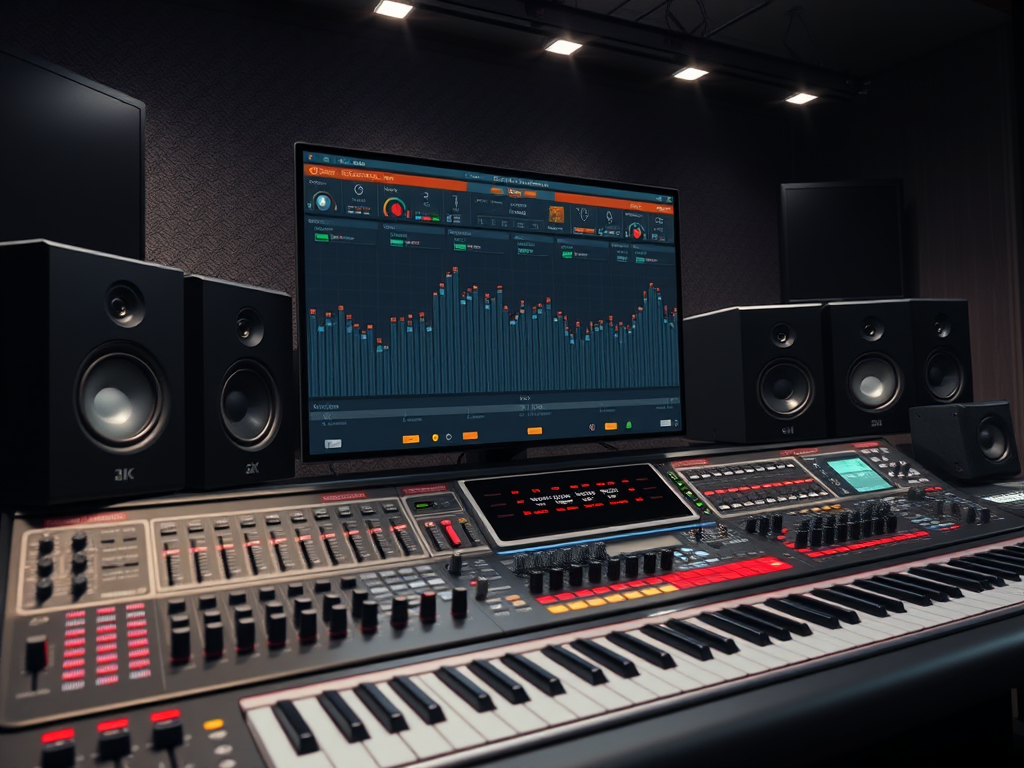New producers often misuse auto-tune due to a lack of experience or understanding of how the tool works. Here are the biggest mistakes new producers make with auto-tune in production, along with tips to avoid them:
1. Overusing Auto-Tune
Mistake:
• Applying auto-tune excessively, creating an unnatural, robotic sound when it isn’t appropriate for the genre or song.
• Using it even when the vocal performance is already on pitch, which can strip away emotion and authenticity.
Why It’s a Problem:
• It can make vocals sound artificial, turning off listeners who value raw, emotive performances.
• Overuse can be distracting and reduce the impact of the song.

Solution:
• Know the Context: Use subtle auto-tune for genres like folk, rock, or acoustic music. Save heavy auto-tune for genres like trap, pop, or EDM where it’s stylistically appropriate.
• Set a Moderate Retune Speed: Instead of cranking the retune speed to 0, experiment with slower speeds (20–50 ms) for a more natural feel.
2. Ignoring the Key and Scale
Mistake:
• Failing to set the correct key and scale for the auto-tune plugin, leading to unnatural-sounding pitch corrections or off-key notes.
Why It’s a Problem:
• Auto-tune will “snap” the vocals to the wrong notes, creating jarring and unmusical results.
Solution:
• Establish the Key First: Determine the song’s key and scale before applying auto-tune. Use a piano, DAW tools, or software like Mixed In Key if unsure.
• Use Chromatic Mode Sparingly: If the key is unknown, chromatic mode can be a fallback, but it risks “correcting” intentional melodic choices.
3. Not Considering the Singer’s Style
Mistake:
• Applying auto-tune too aggressively on singers with expressive vibrato, intentional slides, or unique vocal quirks, which flattens their natural character.
Why It’s a Problem:
• It diminishes the artist’s individuality and may lose the emotional depth of the performance.
Solution:
• Adjust the Humanize Setting: Use the “humanize” feature in plugins like Antares Auto-Tune to preserve vibrato and natural vocal nuances.
• Go Manual for Expressive Passages: For detailed control, use a manual pitch correction tool like Melodyne for tricky sections instead of blanket auto-tune.
4. Applying Auto-Tune to Entire Tracks
Mistake:
• Running auto-tune across an entire vocal track without considering phrasing, dynamics, or specific problem areas.
Why It’s a Problem:
• Over-tuning even well-sung sections can lead to unnatural vocals, particularly when auto-tune reacts to breaths or soft transitions.
Solution:
• Edit Selectively: Apply auto-tune only to sections that need it. For cleaner results, split the vocal track and adjust settings per section.
• Bypass on Breaths and Pauses: Ensure auto-tune doesn’t process breaths or vocal gaps, as this creates artifacts.
5. Ignoring Formant Settings
Mistake:
• Neglecting to adjust or lock formant settings, resulting in vocals that sound “chipmunk-like” or unnaturally deep.
Why It’s a Problem:
• Formant shifting can distort the natural timbre of the voice, making the singer sound unrecognizable or robotic.
Solution:
• Lock Formants: Use the formant preservation feature to retain the singer’s natural tone.
• Avoid Drastic Shifts: If you use formant shifting for effect, apply it subtly and sparingly.
6. Failing to Address Poor Vocal Takes
Mistake:
• Relying on auto-tune to “fix” bad vocal performances instead of re-recording or editing the takes.
Why It’s a Problem:
• Auto-tune can’t fix timing issues, poor enunciation, or extreme pitch problems. Over-correcting weak performances can make the flaws more noticeable.
Solution:
• Record Better Takes: Focus on capturing the best possible vocal performance with multiple takes.
• Use Manual Correction for Problem Areas: Fix extreme pitch issues manually before applying auto-tune.
7. Using Inappropriate Retune Speeds
Mistake:
• Setting the retune speed too fast for slower, ballad-style songs or too slow for genres like trap or EDM that demand sharp, snappy pitch corrections.
Why It’s a Problem:
• A fast retune speed can eliminate slides and transitions in a ballad, making the vocal feel robotic. Conversely, a slow retune speed in genres like EDM won’t achieve the desired sound.
Solution:
• Match Retune Speed to Genre: Use faster speeds (0–10 ms) for modern pop or trap and slower speeds (20–100 ms) for natural-sounding vocals.
• Experiment with Flex-Tune: Use Flex-Tune in Antares Auto-Tune to retain expressive notes while still correcting pitch.
8. Overlooking the Mix Context
Mistake:
• Applying auto-tune settings in isolation without considering how the vocal fits into the mix.
Why It’s a Problem:
• The vocal might sound fine solo but unnatural or out of place when mixed with other instruments.
Solution:
• Check in Context: Continuously listen to the vocals within the full mix while adjusting auto-tune settings.
• Balance Effects: Combine auto-tune with other processing (EQ, compression, reverb) for a cohesive sound.
9. Not Understanding the Technology
Mistake:
• Applying auto-tune without fully understanding the parameters, leading to settings that create artifacts like glitches, warbles, or “yodeling” effects.
Why It’s a Problem:
• Misusing the software can make the track sound amateurish and unpolished.
Solution:
• Learn the Tool: Spend time learning the auto-tune plugin’s features, including retune speed, humanize, and vibrato controls. Tutorials and practice are key.
• Try Alternatives: Experiment with alternatives like Waves Tune or Melodyne to find what works best for your production.
10. Ignoring the Audience’s Expectations
Mistake:
• Using auto-tune excessively or inappropriately in genres or styles where the audience values raw, natural vocals.
Why It’s a Problem:
• Listeners of certain genres (e.g., folk, rock, acoustic) may perceive excessive auto-tune as inauthentic.
Solution:
• Adapt to the Genre: Use auto-tune minimally or not at all for genres that demand authenticity.
• **Develop

